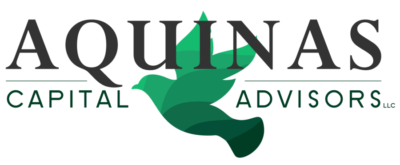A note from the Schwab Newsroom.
The shape of the yield curve has been the subject of some worried-sounding commentary in the financial news recently. The gist of much of it is: Is the current shape of the curve a ringing alarm about the direction of the economy?
As far as indicators go, the yield curve is an important one. On its face, the yield curve is a snapshot of the yields, or expected rates of return, on a collection of bonds of different maturities, from the very short to the very long. The “curve” is the line you could plot connecting those yields, and its shape can tell us quite a bit about market perceptions of the economy. Its record is pretty solid. In fact, every recession in the United States—and accompanying global economic recession over the past 50 years—was preceded by an inverted yield curve.
So has the yield curve entered some scary new phase? Let’s take a look.
What’s in the curve?
Normally, the yield curve slopes upward from the shorter maturities to the longer ones, because yields on short-term bonds are usually lower than those on longer-term bonds. This reflects the fact that investors normally require some additional return in exchange for agreeing to tie their money up for longer periods—the longer the investment’s maturity, the higher the risk that conditions could go south before an investor got their money back, so the higher the required compensation.
The shape of the curve can change as yields fluctuate in response to shifting economic conditions. In general, the short end of the curve is dictated more by the Federal Reserve’s (the Fed) interest rate decisions, while the longer end of the curve reflects investors’ expectations about the future course of inflation and economic growth.
If the economy is growing strongly, the yield curve tends to steepen as investors grow concerned about inflation and potential interest rate hikes by the Fed. As a result, they might start to avoid longer-term bonds, causing their prices to fall and their yields to rise. Remember: Prices and yields move in opposite directions.
When the Fed does raise interest rates, the yield curve tends to flatten as short-term yields rise and inflation expectations ease.
However, if the Fed raises rates too quickly, causing short-term yields to rise above long-term yields, then the yield curve can invert. That’s when investors start worrying about a potential recession, as high rates slam the brakes on growth and inflation expectations.
Dangerously flat?
Where do things stand now? The yield curve, as measured by the difference between the yield on the two-year Treasury and the yield on the 10-year Treasury, also known as the 10s-2s, has flattened significantly over the last few years. When looking at 10s-2s spread, the smaller the gap, the flatter the curve.
“Since the aftermath of the ‘great recession,’ the yield curve as measured by the so-called 10s-2s gap has flattened from nearly 300 basis points to less than 50 basis points, hitting a low of 41 basis points in late April,” says Liz Ann Sonders, chief investment strategist at Schwab. “While the gap has widened again somewhat, it’s still close enough to 50 basis points to be causing some consternation.”
“However, that’s no reason to panic,” she says.
Liz Ann looked at data going back to the 1970s and found that for the five cases when the 10s-2s gap fell below 50 basis points on its way to inverting, it took nearly three years, on average, for the recession to arrive. And looking just at the point of actual inversion, she found that the recession didn’t show up for almost two years, on average.
“Of course, equity bear markets tend to begin in advance of recessions, which is perhaps why investors are getting nervous about the curve’s flattening,” she says “While there are myriad reasons for a bit more caution about stocks this year, which we highlighted in our ‘It’s Getting Late’ 2018 outlook, an imminent inversion of the yield curve is not one of them.”
In fact, stocks continued delivering positive returns as the yield curve flattened and inverted in the five cases mentioned above.1
“Inverted curves have tended to lead bear markets, but often with a substantial lag. But not all bear markets were preceded by inverted curves. That’s why only looking at the yield curve doesn’t yield strong conclusions across all market environments,” she says.
As it happens, corporate earnings reports have been beating forecasts, and a variety of other economic measures continue to show steady growth in the economy.
Stay disciplined
That’s not to say things will go smoothly. The Fed is likely to raise interest rates several more times this year, and a general tightening of monetary conditions could lead to more of the stock market volatility we saw earlier this year.
“All things considered, a more challenging investing environment requires a more disciplined and patient investing approach,” she says. “The next few months could continue to be choppy, but a U.S. and/or global recession still appears a ways off, which should keep the bull market—here and globally—intact.”
1S&P 500® Index price performance, using Charles Schwab, Bloomberg and FactSet data as of 4/20/2018.

